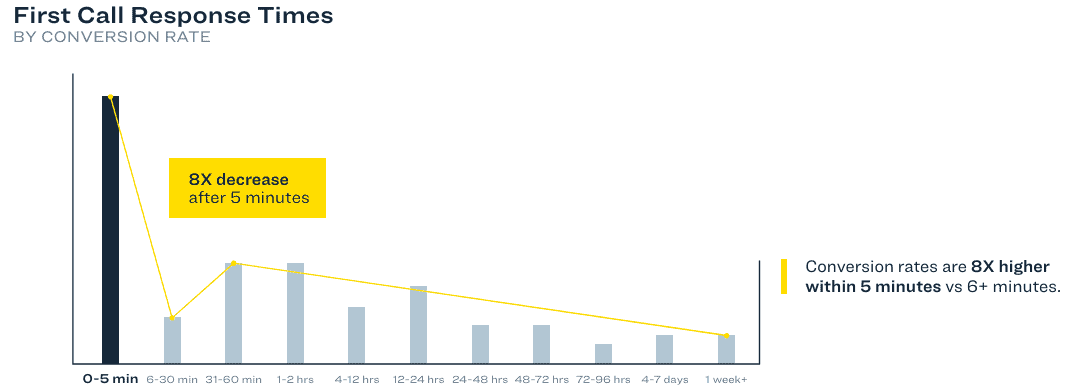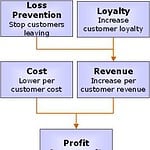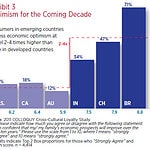Providing really effective customer service doesn’t have to be difficult. Like most things in life it abides by the famous 80/20 rule: 80% of the value can be delivered with 20% of the work.
The problem is that most organisations don’t know which is the right 20% so they can’t deliver it effectively.
Over the last 20 years we have sent and analysed customer feedback surveys in many industries.
Based on that extensive data-set we are sharing the three service attributes that consistently drive 80% (or more) of customer loyalty across a range of businesses.
The best part is that are not complex and every business, small and large is able to apply them.
1. Do What You Say You Will Do
If you could only instill one service mantra in your organisation this it’s: Do What You Say You Will Do.
Whether you call it “reliability” or “consistency” or simply “do what you say you will do”, this drives more customer loyalty than any other single service element.
The hardest part of delivering this attribute is having staff understand that the key to reliability is setting the right customer expectations.
Most people want to deliver good service but, with the best of intentions, this can lead them over-promise.
“Of course we can deliver a rush order of that widget, in pink with purple spots by Friday!”
The trouble is over-promising is the enemy of service reliability.
Instead of being optimistic, as most customer service and sales staff are, teach your staff to be just slightly pessimistic. Sound odd but it works.
If they think a package will be delivered in three days, teach them to tell customers it will be delivered in five days. If they expect to be able to provide a proposal next Wednesday teach them to promise it next Friday.
Being consistently pessimistic in advising deadlines and describing what can be delivered is difficult for most front line people because they want to please customers. They want to keep the customers happy by promising the fastest or best possible outcome.
But instead of happiness this path leads into unhappiness.
When they miss an optimistic deadline they have to break the bad news to the customer and that hurts. It hurts the customer’s trust and the person’s ego.
The converse drives much more customer loyalty. Give them the, slightly, bad news up front and then, slightly, over deliver.
2. Be Hyper Responsive
Responsiveness can be a double edged sword because if you are very responsive it drives up customer loyalty but it also drives up customer expectations. The more responsive you are the more responsive you have to be.
However, the pain is worth it because the value is high; let me show you just how high.
The chart below is research from the sales performance industry where outbound calls are made in response to a request by a prospect from a web form.

It shows the number of conversions versus the number of minutes since the customer request.
The seemingly insignificant change between responding in <5 minutes rather than 6+, results in an 8x increase in conversions.
The immense impact that responsiveness has on sales, and customer loyalty, is clear.
The problem is that in practice, staff often don’t want to contact the customer until they have a resolution to the question or issue. This is the wrong approach.
The subtlety here is that they do not need is to solve the customer problem in five minutes – they only need to respond to the customer in five minutes.
The difference is important and needs to be clear to staff.
They need to respond to the customer and say “I’ve heard you and here is what is happening” within just a few minutes
To really understand this idea you have to look at it from the customer perspective.
From the second they email or call in and leave a voice message until the second hear hear back from you they are waiting and wondering.
- Have they received my message or has it been lost?
- Is anybody actually doing anything?
- Do I need to email or call again?
- Is this going to cost time or money or hassle?
- When will I hear back?
- When should follow up, how long should I wait?
- etc.
Until they hear from you they have an open task that takes mental energy to manage. The faster you let them know what’s happening the less mental energy they expend and the happier (more loyal) they are.
Of course once you respond you need to “do what you way you will do” but I’ve already covered that.
3. Be Easy to Do Business With
Your customers will trade off a host of other service attributes if you are easy to do business with. They will forgive a slightly less fancy showroom or slightly higher price (it’s true) if working with you is easy.
So look for ways that you can make it easy for customers.
Here are three examples from our own business:
Easy to understand Proposals
In our consulting business we are often told by customers that our proposals are easy to understand. This is because, typically, they are just a handful of pages long, done in PowerPoint, with a few bullet points on each page.
Make no mistake they are very clear and cover all of the details that are required but they don’t have pages and pages of waffle and boiler plate text that are so often included in consulting proposals. This text adds no value and only serves to confuse customers.
Fixed Price Not Hourly Rate
Also, we typically fix price our work by the project and do not charge by the hour. For our customers that makes us easy to use. They know the price of the work upfront and do not need to worry that at some point they will need to explain to their manger why they are 20% over budget.
Fixing the price means that we’re taking on the risk if we misunderstood the scope. So we also charge more to cover that risk than we’d charge if we did the work on hourly rates. We explain this to customers and even then 99% of customers want the easy to budget fixed price.
Provide Clear Next Steps in Proposals
Lastly, one of the simplest things we do to make it easy for customers is to provide clear instructions on how to proceed with the proposal.
We include the following steps right on the pricing page:
To accept this proposal
– Tick applicable Option(s)
– Sign this page
– Fax/scan and email entire “Investment” section of proposal to 555 555 555
It sounds simple (and it is) but how often have you gotten to the end of a War and Peace proposal, decided to proceed, but been none the wiser on just how to do that.
You can see that it’s little things that make the difference here. So, look for ways in your business to make things easier for customers.
What’s Missing – Price!
This is not a service element but it’s important to raise. In all the customer feedback we’ve done over the last 20+years we have never identified price as the most important driver of customer loyalty.
Typically it comes in around 4-6 in the priority list.
Is that a surprise? It’s not to me.
Think of how many times you paid a little (or a lot) more for the company that you’ve found reliable, or responsive or easy to do business with.
Of course, if you ask a customer feedback respondent “How important is price?” they will tell you 7 out of 7 but that doesn’t mean it’s true.
So we never ask respondents directly how important an attribute is because you can’t get an accurate answer that way. We use other techniques to infer importance from the customer feedback data.












